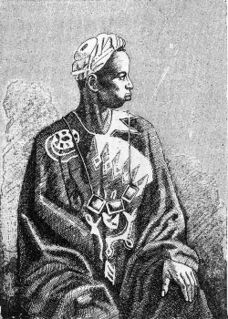 W
WBoukout is a Jola rite of passage practiced in Ziguinchor, Senegal.
 W
WThe Festival International des Masques et des Arts, or FESTIMA, is a cultural festival celebrating traditional African masks held in Dédougou, Burkina Faso. Founded to help preserve traditional cultural practices in the modern age, FESTIMA features masks and traditions from several West African countries. It is currently held biennially in even-numbered years. The most recent edition, the fifteenth, was held from February 29 to March 7, 2020 in Bankuy.
 W
WA griot is a West African historian, storyteller, praise singer, poet, or musician. The griot is a repository of oral tradition and is often seen as a leader due to their position as an advisor to royal personages. As a result of the former of these two functions, they are sometimes called a bard.
 W
WFollowing an historical process of appropriation of American popular music by Senegal, hip hop emerged in the Senegalese capital city in the early mid- 1980s. Although hip hop galsen is now famous for its diverse musical productions, the movement there spread out from its dancing appeal rather than from its musical one. Indeed, Senegalese hip hop artists initially participated in this movement as smurfer, breakdancer, B-boy in general performing during organised podiums. Schools, nightclubs and other temporary public stages thus played an essential role in amplifying this movement in Dakar. Besides, and in contrast to American hip hop, which grew from the youth in the inner city ghettos, hip hop in Dakar began among a somehow middle-class youth who was able to access and/or introduce in their home place new ideas and new cultural expressions coming from abroad. Indeed, hip hop became popular in the capital city through the intensive through informal circulation of VH7 cassettes and recorded videos, which were imported from USA or France by diaspora people.
 W
WThe Ndut is a rite of passage as well as a religious education commanded by Serer religion that every Serer must go through once in their lifetime. The Serer people being an ethnoreligious group, the Ndut initiation rite is also linked to Serer culture. From the moment a Serer child is born, education plays a pivotal role throughout their life cycle. The ndut is one of these phases of their life cycle. In Serer society, education lasts a lifetime, from infancy to old age.
 W
WQueen mothers are leaders and women of power in Africa. There is no general description of a queen mother. Generally, queen mothers play an important role in local government and "wield social power and influence." The amount of power they currently hold has been diminished since pre-colonial times.
 W
WThe Kumpo, the Samay, and the Niasse are three traditional figures in the mythology of the Diola in the Casamance (Senegal) and Gambia.
 W
WSenegalese literature is written or literary work which has been produced by writers born in the West African state. Senegalese literary works are mostly written in French, the language of the colonial administration. However, there are many instances of works being written in Arabic and the native languages of Wolof, Pulaar, Mandinka, Diola, Soninke and Serer. Oral traditions, in the form of Griot storytellers, constitute a historical element of the Senegalese canon and have persisted as cultural custodians throughout the nation’s history. A form of proto-Senegalese literature arose during the mid 19th century with the works of David Abbé Boilat, who produced written ethnographic literature which supported French Colonial rule. This genre of Senegalese literature continued to expand during the 1920s with the works of Bakary Diallo and Ahmadou Mapaté Diagne. Earlier literary examples exist in the form of Qur’anic texts which led to the growth of a form African linguistic expressionism using the Arabic alphabet, known as Ajami. Poets of this genre include Ahmad Ayan Sih and Dhu al-nun.
 W
WSenegalese wrestling is a type of folk wrestling traditionally performed by the Serer people and now a national sport in Senegal and parts of The Gambia, and is part of a larger West African form of traditional wrestling. The Senegalese form traditionally allows blows with the hands (frappe), the only one of the West African traditions to do so. As a larger confederation and championship around Lutte Traditionnelle has developed since the 1990s, Senegalese fighters now practice both forms, called officially Lutte Traditionnelle sans frappe and Lutte Traditionnelle avec frappe for the striking version.
 W
WThe talking drum is an hourglass-shaped drum from West Africa, whose pitch can be regulated to mimic the tone and prosody of human speech. It has two drumheads connected by leather tension cords, which allow the player to change the pitch of the drum by squeezing the cords between their arm and body.
 W
WTata of Chasselay is a cemetery in the city of Chasselay, Rhône including almost 200 graves of Senegalese Tirailleurs killed during the Chasselay Massacre during World War II.
 W
WUniversité des Mutants is an international center of meetings and conferences on the island of Gorée, Senegal, opposite Fort d'Estrées which houses the Musée historique du Sénégal.